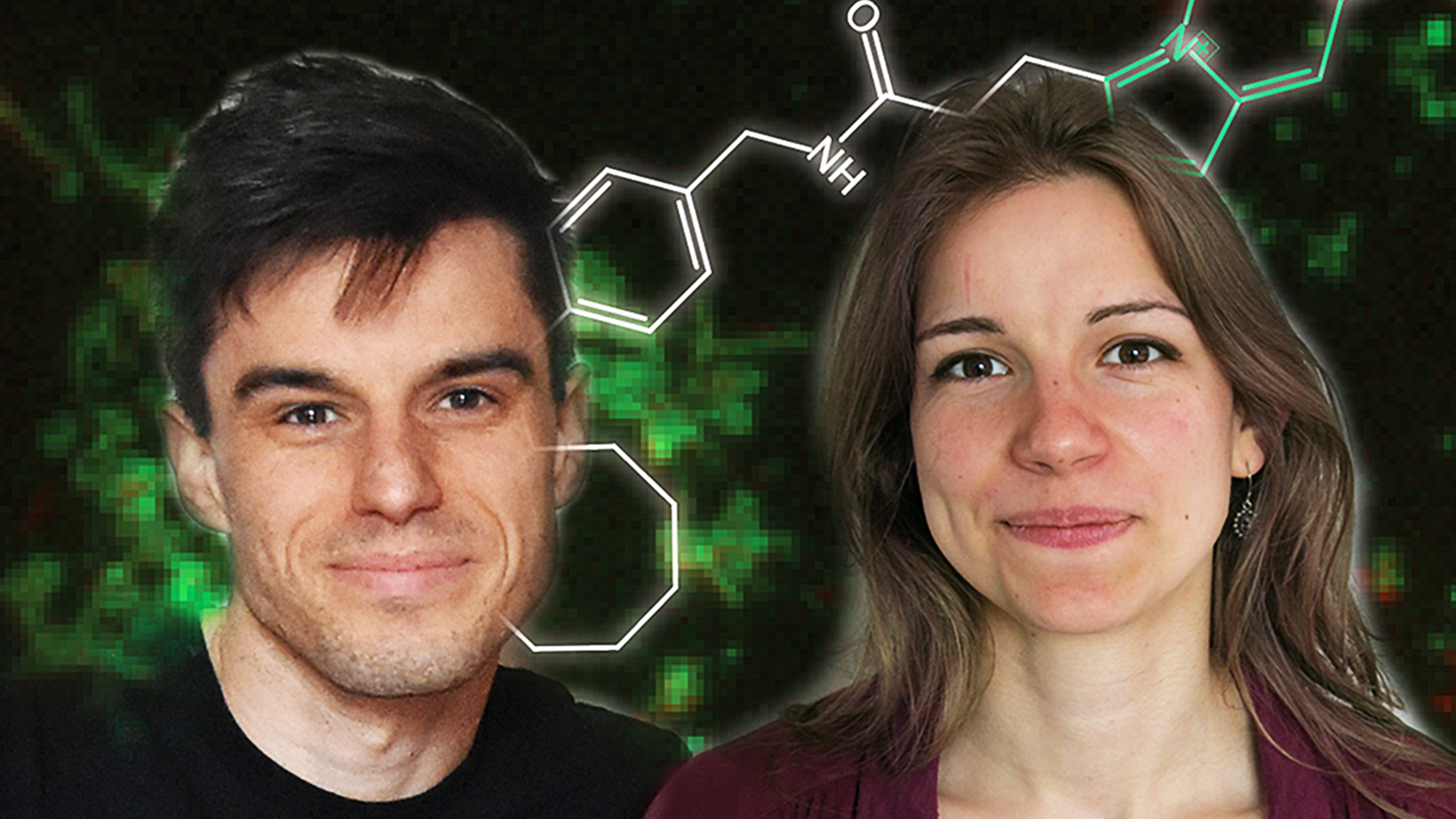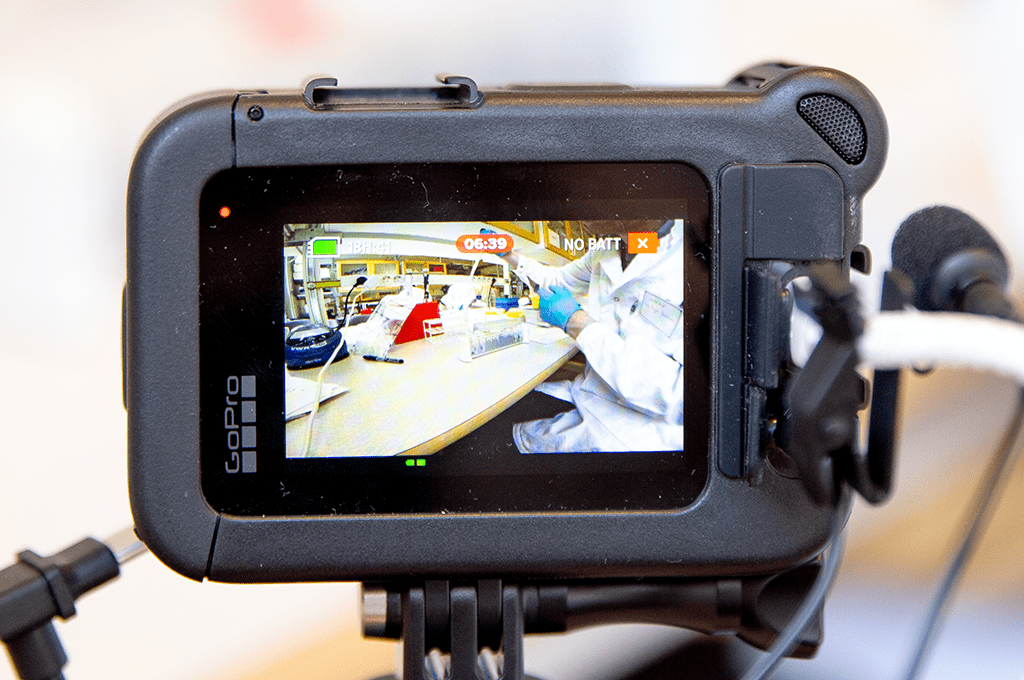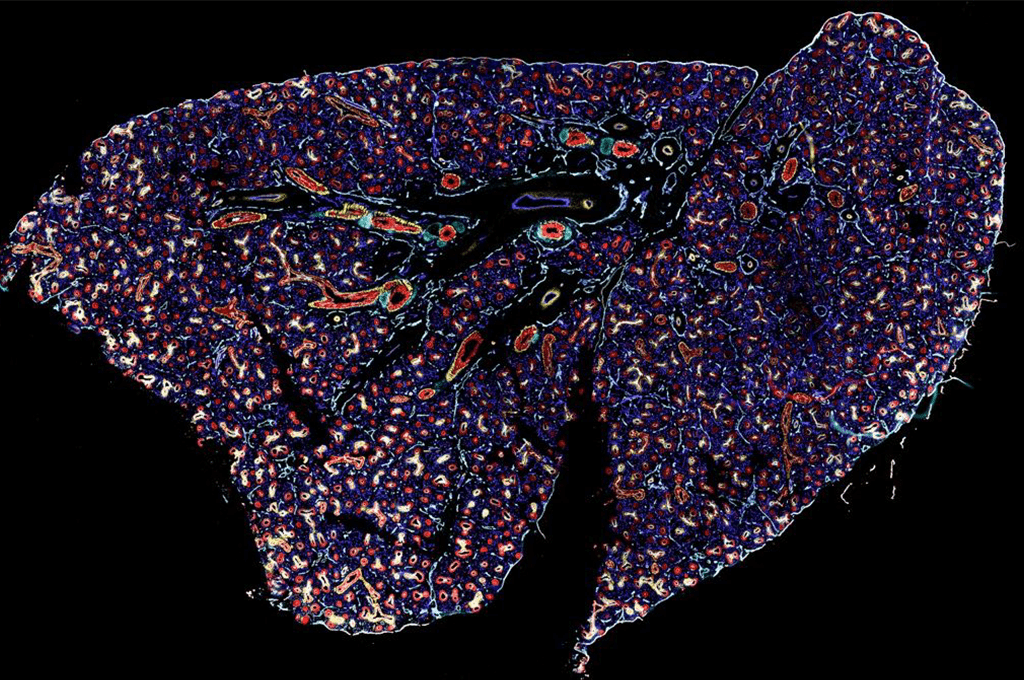Single amino acid attached to ends of protein for fluorescent tagging
Attaching a single amino acid to proteins and microproteins is a novel approach to fluorescent tagging. The method was developed by a team of scientists led by SciLifeLab Fellow Simon Elsässer (SciLifeLab/KI).
To study proteins inside human cells, researchers have been using light microscopes for more than a hundred years. Thirty years ago, the cloning of the green fluorescent protein GFP, together with genetic engineering tools, revolutionized the field by enabling researchers to fuse a fluorescent ‘beacon’ to any protein of interest so that it could be directly observed in cells using fluorescence microscopy.
Today’s microscopes can achieve live imaging, at nanometer resolution, in multicolor. Allowing researchers to resolve even the smallest subcellular structures and essentially watch proteins at work.
Fluorescent proteins and other tools available to researchers have one major limitation, however: the size of the fluorescent tag is often equivalent to the size of a typical folded protein, adding a considerable molecular ‘cargo’ to the investigated protein and might therefore potentially disrupt its function.
This can become a particular obstacle when studying micro-proteins, a newly appreciated class of proteins that are much smaller than average. Such tiny proteins have often been overlooked in the past but seminal discoveries of microproteins with important biological functions have sparked a growing interest in the research community. SciLifeLab Fellow Simon Elsässer has made it a focus of his laboratory to tackle the challenges of discovering and characterizing microproteins.
In a study led by Simon Elsässer and first author Lorenzo Lafranchi, the team has developed a method which allows fluorescent tagging of proteins with the smallest imaginable perturbation – a single amino acid – added genetically on either end of the (micro)protein of interest.
The study, published in the Journal of the American Chemical Society, demonstrates the utility of Single-residue Terminal Labeling, STELLA, in fluorescent labeling of a variety of human proteins and micro-proteins, localized to different subcellular compartments and organelles. Beyond cellular proteins, the team was also able to label and localize a number of elusive polypeptides produced by the SARS-CoV2 coronavirus infamous for causing COVID-19.
STELLA incorporates a synthetic building block (a non-canonical “designer” amino acid, rather than one of the 21 canonical ones) together with a larger tag using a technique termed genetic code expansion. The tag is swiftly removed by the cell however, leaving a single terminal designer amino acid on the protein of interest.
With advantage over existing labeling techniques relying on genetic code expansion, STELLA can be used to conveniently and universally label the termini of any protein. While very similar to its natural counterpart, the designer amino acid introduces a peculiar chemical group into the protein that subsequently allows conjugation with a small organic fluorescent dye, now lighting up the protein of interest inside the living cell.





